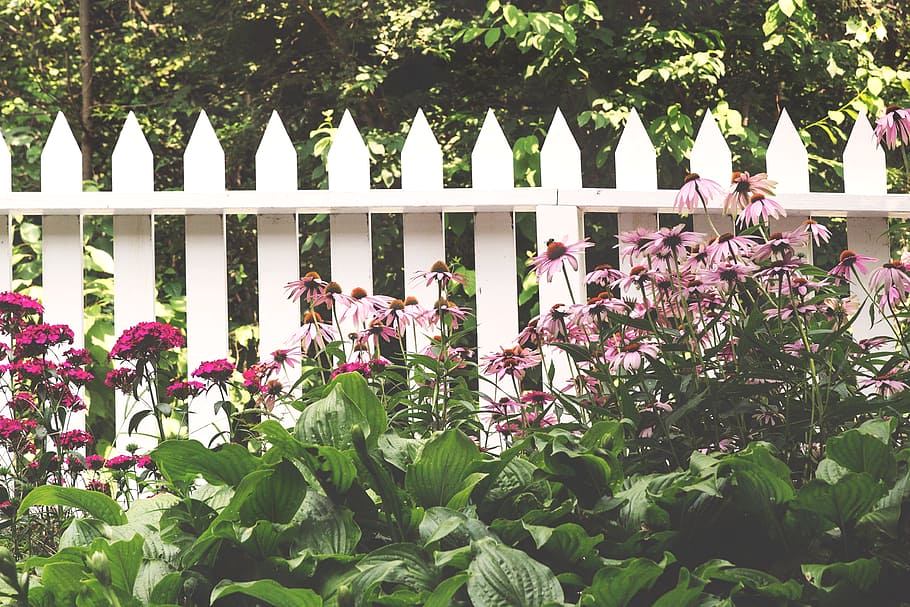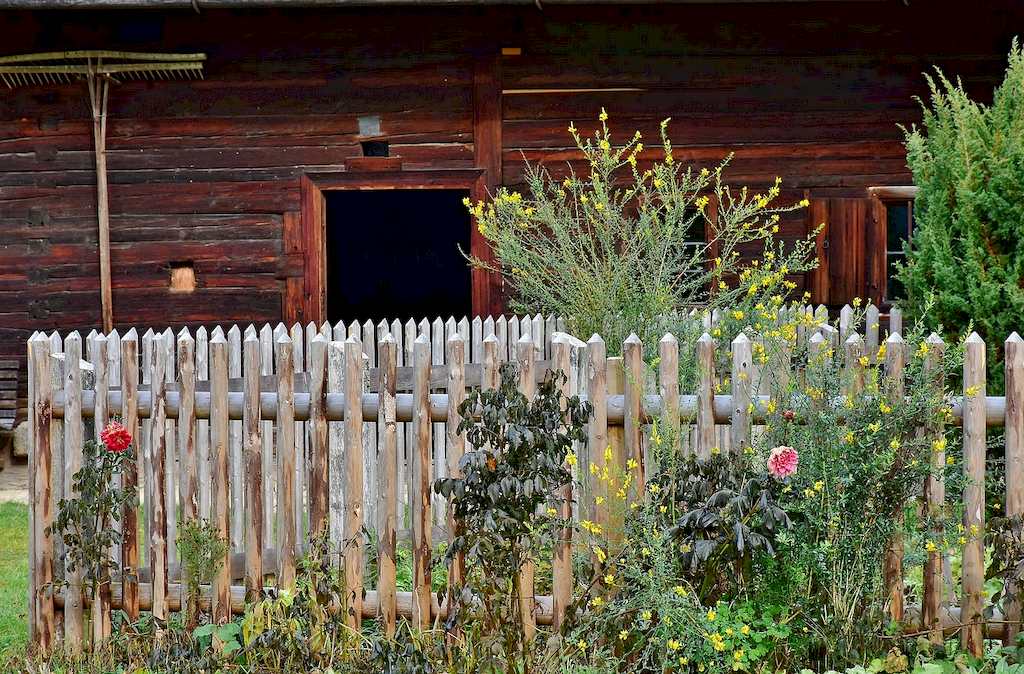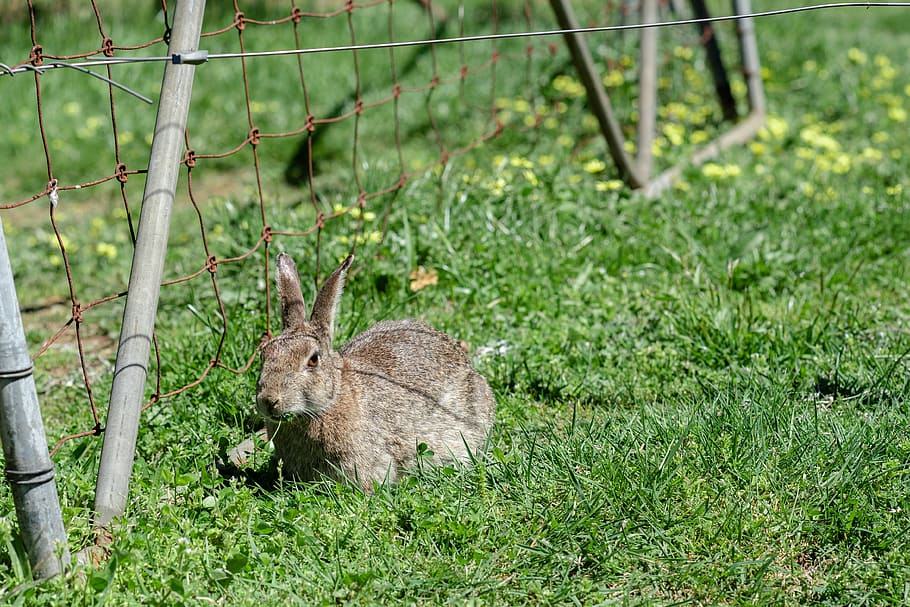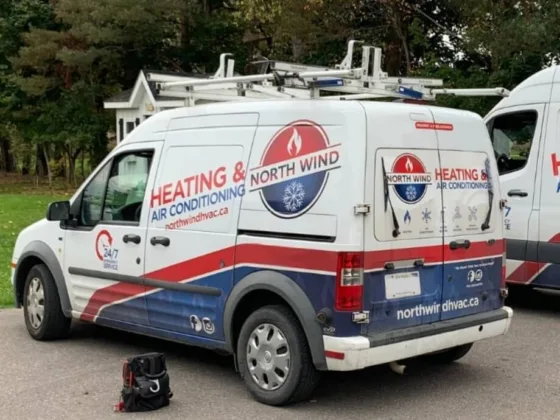Gardening is an awesome passion and one that is being enjoyed by many.
It takes a lot of work thus everyone wants it to be successful. Installing a fence around it makes this happen. That’s why gardeners considered getting a fence a priority.
Fencing in a garden can be useful for keeping away pests and protecting it from destruction. It is also a way of establishing garden boundaries or helping to organize a garden area.
Fencing can be expensive. Thus your goal and design should be also considered to avoid wasting money.
The Importance of Fencing in Your Garden
Both domestic and wild animals can cause damage to your garden. Thus a well-built fence can help deter animal pests such as rabbits, dogs, and deers.
They destroy or eat your produced plants. And these animals are likely found in urban gardens as in rural areas.
Garden fences can also prevent minor vandalism. It will assist in redirecting foot traffic from public areas. It also creates a finite space around a perimeter of your garden.
This helps you out to determine how much space you have for your plants. Fencing reduces waste and allows your plants to thrive.
Read Also:
- 6 Top Benefits of Garden Fencing for Protecting and Beautifying Your Homes
- Advice on Fence Building, with 14++ DIY Fencing Ideas to Build Yourself
- Wood Fences vs. Vinyl Fences: Which are Cheaper and Why
- DIY Chain Link Fence: What Everybody Ought to Know
- Using Outdoor Lattice as a Privacy Screen or Fence
- Install a Wood Fence in 7 Steps
Garden Threat Identification
Which type of fence works best for your garden will depend on what you try to keep it away from. So you’ll need to start by identifying the threats on its surroundings.
Here are some of the most common garden pests you will consider while building your fence:
Deers
Deers are most active at night and you will often see them at dawn and dusk as well. They munch your plants and leave the rough, shredded, or uprooted vegetation behind.
They can reach much higher than other common pests. Damage more than 2 feet off the ground is a strong indicator of pest invasion.
Fencing solutions are usually 8 feet tall and electrified. You can also use a double-fence system (two fences spaced 3 feet apart). Deer will not jump into an area that they can’t see or where there does not appear to be a safe landing spot.
Aside from fencing, there are also other ways to build your Deer-Proof Gardens. You can check some list of novel methods to turn your garden into a deer-proof zone.
Rabbits
Rabbits have sharp incisors. The leaves and stems are usually clipped off at a 45-degree angle. They are also particularly fond of nibbling on new growth and tender young plants.
Damage reaches up to 2.5 feet above the ground and is worst in the spring and early summer. They are most active at dawn and dusk.
They often leave small round brownish-green droppings.
Fencing solutions for rabbits do not need to be tall (2 feet is generally enough). The fences need to be tough (to prevent them from gnawing through it) and have no gaps larger than 1 inch.
It needs to be set a few inches into the ground or bent out at a 90-degree angle at the bottom. This is usually done to prevent them from burrowing under.
Groundhogs or Woodchucks
Groundhogs, also called woodchucks, like to snack on vegetables. You’ll often find cucumbers or beans left lying around with bites eaten by them.
They also love to eat the tops off carrots and are active during the day, particularly in the early morning.
They will have a burrow nearby with a large hole and a pile of dirt next to it.
Fencing Solution for groundhogs needs to be at least 3 feet high. The fencing needs to extend outwards 1-2 feet at a 90-degree angle, buried a few inches in the ground.
This prevents them from burrowing under. The fencing material needs to be tough (to prevent them from gnawing through it). It should have no gaps larger than two inches.
Gophers
Gophers are active both day and night and eat your root vegetables. They also like to eat the roots of flowers, shrubs, and trees. They will come to eat tender vegetation above ground. You’ll see indications of tunnels.
Fencing solution for gophers has usually raised beds lined with hardware cloth. Fencing should be at least 1 foot high without raised beds and extend at least 2 feet into the ground.
Mesh should have holes no larger than 3/4 of an inch in diameter.
Always choose galvanized or coated fencing for buried applications. You can also add two coats of rust-proof paint to untreated metal.
Raccoon and Opossum
These animals dig and climb, and may munch on any plant you have. They are active anytime in a day.
Fencing solution for raccoon is a 4-foot fence. This unattached 18 inches top will fall back on the climbing creature. This prevents them from scaling the fence.
Curve the bottom of the fence 90 degrees to create a 2-foot wide apron to prevent them from tunneling under.
Next, bury it several inches deep. Placing an electric wire can also operate on top of a 3- to 4- foot tall fence.
5 Benefits When You Set Up a Garden Fence
Fences are usually installed with a particular purpose in mind. It actually has many uses and benefits. Here are the following benefits:
Security
Fencing improves security. It keeps the inside in and the outside out. This also prevents unwanted animals, unauthorized vehicles, or people from accessing your land.
Privacy
Do you want to have that feeling of your own enclosed space? Fencing is usually built for that purpose.
Divider
Fences are a perfect way to divide up space. That could be around your home, your workplace, or your land. It is a great option with its traditional style of pale horizontal rails.
Fences may also come pre-assembled, so you only have to attach them to create your divider.
Shelter
Wind, rain, direct sun? Is there a spot in your garden that needs a little extra protection? Fences are great for sheltering flower borders from windy conditions.
It is ideal for forming a natural-looking backdrop to any landscaping scheme.
Decoration
You may wish to create an artistic feature out of your fence. A fence that provides privacy and security without sacrificing your garden’s aesthetic.
7 Different Types of Fences: Best for Gardening
A fence is a handy way of defending your garden from critics. It’s also a nice way to add a little personality to your house and set it apart from other neighborhood houses.
But depending on your needs, it can be hard to pick just the right fence.
Here are 7 types of fences best used in gardening:

Traditional Picket Fence
A white picket fence adds a huge dose of curb appeal to your home. Many styles also come in easy-to-maintain composite or vinyl materials.
White picket fences are beautiful additions to every style of the house. The designs are from colonials to capes to farmhouses.
Minimalist Iron Fence
This easy-to-install iron fence can be j put in place in one afternoon. It’s as sturdy as a chain-link fence.
Its design and black finish is an elegant way to keep unwanted guests out of your garden. This fence puts practicality over ornamental aesthetics. Its streamlined simplicity fits anywhere on your property.
Bamboo Fencing
Bamboo is a popular material for outdoor landscaping. Large stalks of bamboo are usually cut and arranged side by side to blend into the landscape.
This separates the garden area from the rest of the space. Each bamboo stick is then cut and wrapped with white roping.
To cut thick bamboo poles, use a hand saw or table saw. Put masking tape around the area you are cutting to prevent splintering of the wood.
Wood and Wire
This fence uses wood and chicken wire to divide the garden from the rest of the yard in a relaxed, elegant way. It provides a focal point among the garden beds with an enticing breakfast table.
The chicken wire looks at home in this setting as it helps the roses climb and thrive.
Logs and Chicken Wire
This simple garden fence with wire and logs adds rustic charm while it works to keep the plants safe.
This option has a lot more height than some of the other featured fences. It is open so it doesn’t feel boxed in or overwhelming.
A perfect log splitter will also help you decorate and cut logs according to your liking. There are best log splitters you can choose from in the market.
Recycled Pallet Fence
The wooden pallet can be one of the best recycled materials from which to build a DIY garden fence. Pallets can be usually found for pennies (or free). It has a rustic, yet modern design depending on the type of garden fence you create.
Double Decker Deer-Proof Fence
This garden fence uses heavy-duty metal and wire to contain the garden and is tall enough to keep deer away. The caps on the poles accent the elegance of the fence.
If keeping away pests from your garden, a two-story metal and wire fence can serve that purpose.
Setting up Garden Fence: Tips & Guide
Choose the Right Fence
The most important step is to choose the right material and style for your garden fence. If you want the fencing combines a decorative look, wrought iron may be also considered.
The fencing comes in a range of heights and is sturdy so it can not be then knocked over by animals.
Plastic fences tend to be light and flimsy, but they are the least costly. Plastic can be a cost-effective way to keep the animals out if properly supported.
A plastic fence can be also made for an appealing look with some imaginative design.
Metal or wire is a good fence material as it will last long. Wire fences are either welded or woven to keep the fences together in any way. The thickness of the metal is usually called the gauge.
The lower the number of the gauge, the thicker and stronger will be the wire. To strengthen the life expectancy, the wire fence material is also galvanized.
Wood is ideal for posts, fence panels, or both. Wood fencing costs more than wire but is usually regarded by some people as more attractive.
There are some different wood fence types, from pickets to panels for privacy. The height and the distance are likely determined by the need to fence animals out.
In certain cases, wire fencing is then connected to the lower part of a wood fence. This provides a wood fence look and wire animal protection.
Check Utility Lines
Whatever type of garden fence you’re settling on, you’ll need to dig postholes to install it. You must make sure that you do not harm cables, pipes, drains, and other water lines that may be below the surface.
Before you get out your post-hole digger and shovels, call your local utilities first.
Get Sturdy Anchor Posts
If you want a robust garden fence, you’ll need to have strong posts. Fencing particularly requires strong anchor posts at corners, curves, drops, rises, and gates. Enhanced stability is then required.
The anchor posts should be larger in diameter than the other posts in the fence. It should also be higher so that you can put them in the ground deeper.
Space Posts Correctly
Anchor posts are the most important structural elements in a garden fence. Few extra posts are usually required to stabilize it along its length.
These line posts are usually smaller and thinner than anchor posts. It doesn’t have to be as strong as they serve to keep the fence in position.











